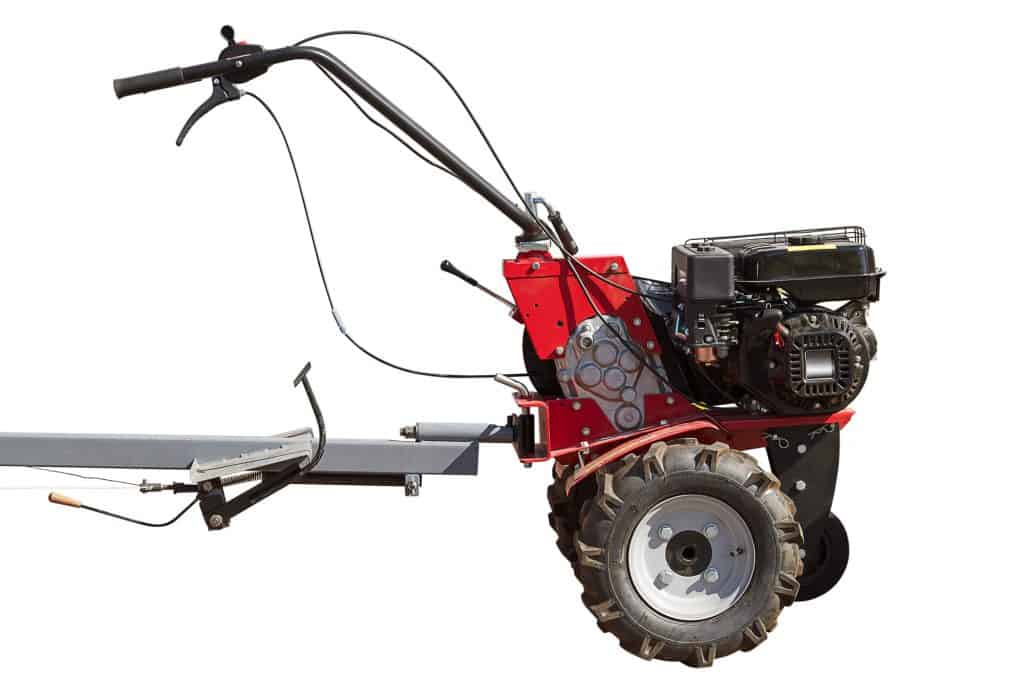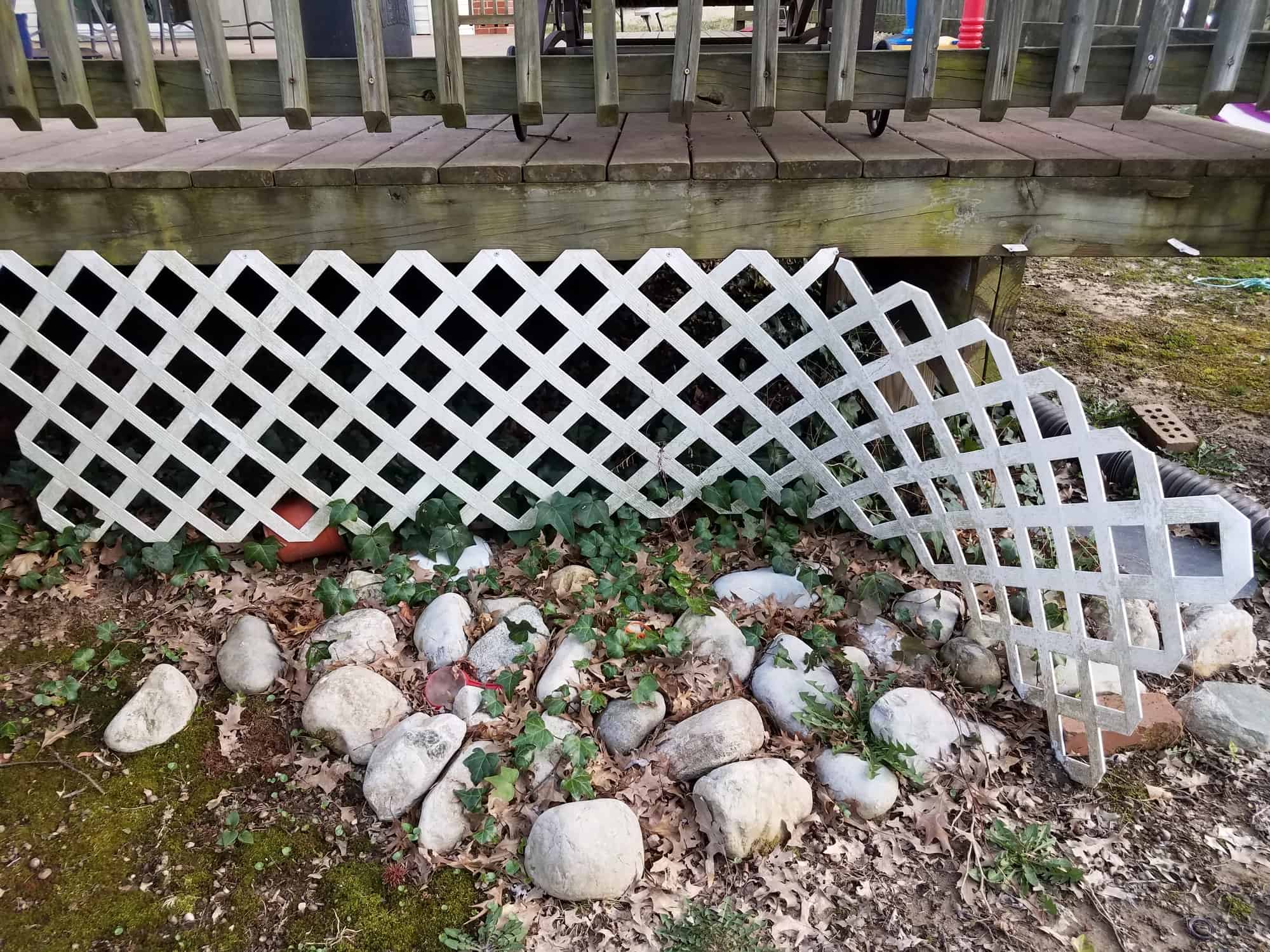Decks definitely enhance the beauty of a home and increase your property’s value. However, you might start experiencing challenges with your deck as time goes on.
From animals making themselves comfortable underneath the deck to structural problems due to tear and wear. To address the problems, you might need to dig and rebuild the deck area
So, how can you excavate from under your deck?
How you excavate from under your deck depends on deck type. For significantly raised decks with enough space underneath, using a mini excavator is ideal. However, it should be operated by a professional lest you damage the footings. Manual digging is another way to excavate your deck.
Curious to learn more about maintaining your deck and keeping it in prime condition? Then you’ll love our in-depth guide on excavating from under a deck. Let’s jump straight to business.
Determine the Type of Deck You’re Dealing With
Since deck type usually depends on the nature of the outdoor spaces, it’s important to consider which type you’re dealing with.
Some homes will have flat decks that float above the ground, while others, mostly due to sloppy surroundings, tend to have raised decks.
Excavating under a raised deck is easier, especially since you’ll have more space to work on. However, when dealing with ground-level decks, you won’t have a lot of options.
If your deck is inches above the ground, then you’ll need to remove the footings to access the ground below.
Dig Manually to Excavate a Ground Deck
The only way to excavate from under a ground level deck is to remove the entire top parts.
This means removing the rails, deck post, deck board, ledger board, the intermediate joist, rim joist, subframe, and even the support beams and legs.
Basically, you’ll need to clear the entire deck to access the ground under.
Tools to Use
Now that you’ve removed the deck, it’s time to start digging. The tools you’ll use to excavate the deck area should depend on the type of soil you’re dealing with. Some common tools you can use to dig the deck soil include the following.
- Lawn edger: You’ll need a lawn edger if you’re excavating an area with grass. This could be the case if the area under your deck was exposed to sunlight and was conducive enough for vegetation.
- Power sod cutter: This is an ideal tool for people with large decks spanning across a large area. A power sod cutter might help weaken the grass under, making it easier to use other excavating tools.
- Garden tiller: Garden tillers are important tools, especially when looking to excavate huge spaces underneath a deck. The tiller works by loosening the soil, consequently making digging a lot easier.
- Mattock: Mattocks come in handy in digging potentially hard surfaces. The two ends make it possible to dig beneath the ground and lift the dirt, thus allowing you to excavate to your desired level.
- Shovel: It is virtually impossible to excavate without a shovel, which allows you to dig and move the soil, making it possible to measure the ground level.

Suppose you’re excavating under a deck that is several inches above the ground (but not high enough to fit a mini excavator).
In that case, you won’t need to demolish the entire structure, especially if it’s large enough to fit you (in a standing position). All you’ll need to do is remove the under-deck screening (if you have one) and start digging the area below the deck.
This is a great option if you don’t want to bring the entire deck down. However, the tools you’ll be able to use will depend on the space below the deck.
If the space is too small to allow for shovel or mattock digging, you’ll probably need to remove the deck’s parts to access the ground below.
Use a Mini Excavator to Excavate a Deck Several Inches Above the Ground
As mentioned earlier, the type of method used to excavate below decks should hinge on how many inches the deck is above the ground. If your deck is several meters above the ground, you’ll be glad to know you can excavate the area using the most efficient way possible: using a mini-excavator.
But before you bring in a mini-excavator, you should first remove the underside railings if your deck has them. This will ensure the area is mini-excavator ready.
Below are steps to take when using a mini excavator to excavate underneath your deck:
- Consult with your local authorities. If you intend to carry a significant excavating process, it’s highly advisable to check in with your local authorities. This will ensure that should you want to put up new structures, you’ll have a permit from your municipality building code office.
- Survey the space. Want to avoid leveling and re-leveling headaches? If so, then your best bet is to check on the angles of your property. That is, the level of inclination or slope of the ground beneath the deck to ensure you have accurate measurements before breaking ground.
- Deal with professionals. We cannot state this enough. Excavation, whether light or heavy, should be taken seriously. Professionals will do all the dirty work for you. They’ll first survey and test the land before proceeding with the excavation. This will go a long way in ensuring that a proper excavation job is done without damaging your underground piping or other parts of the house.
Advantages of Using Mini Excavators To Excavate Under Raised Decks
Mini Excavators Are Ideal for Compact Project Sites
Mini excavators are light and can be easily transported to your home without costing too much. Moreover, a mini excavator’s small size makes it ideal for deck excavation, especially if the deck is raised several meters above the ground.
Attachments Can Be Added to the Mini Excavator
Similar to conventional excavators, mini excavators can have a wide range of attachments installed. Some of the equipment that can be added include:
- v-bottom bucket
- Power tilt
- Power wedge
- Ditching bucket
- Thumbs
- Rippers
- Rakes
- Augers
- Chuck blades
- Hammers
- Rotating log grapple
- Demolition grapple
- Rotating utility grapple
The versatility of mini-excavators makes them an ideal option for light excavation projects. If you want an easy alternative to manual digging, renting a mini-excavator might be the best idea. Again, you should outsource to professionals if you don’t have any experience with operating excavators.
Time-Saving
A mini excavator can help you save a considerable amount of time, especially if you’re working against tight deadlines.
Compared to manual excavation, mini excavators can get the job done a lot quicker. Either way, you’ll need to follow the lead of the professional team you’ve outsourced to.
Manual digging might prove problematic, more so if you don’t have the right tools at your disposal.
Ideal for Hard Surfaces
If you’re excavating an area with concrete, gravel, or other hard surfaces, chances are conventional digging might not be the best method.
You’ll need something that’s tough and strong enough to break past the surface with relative ease.
A mini excavator, due to its strength and versatility, can excavate under hard deck surfaces without requiring too much work.
Final Takeaway
When it comes to excavating under the deck, you’ll first need to consider the type of deck you’re dealing with. Raised decks are usually easier to excavate due to the additional space.
On the other hand, ground-level decks are among the hardest to excavate since you’ll need to first remove the deck components.
If you choose to excavate manually, then it’s best to have all the necessary tools on standby to get the job done as quickly as possible.
But if using a mini-excavator is your preferred option, it is highly advisable to outsource to renowned professionals.

